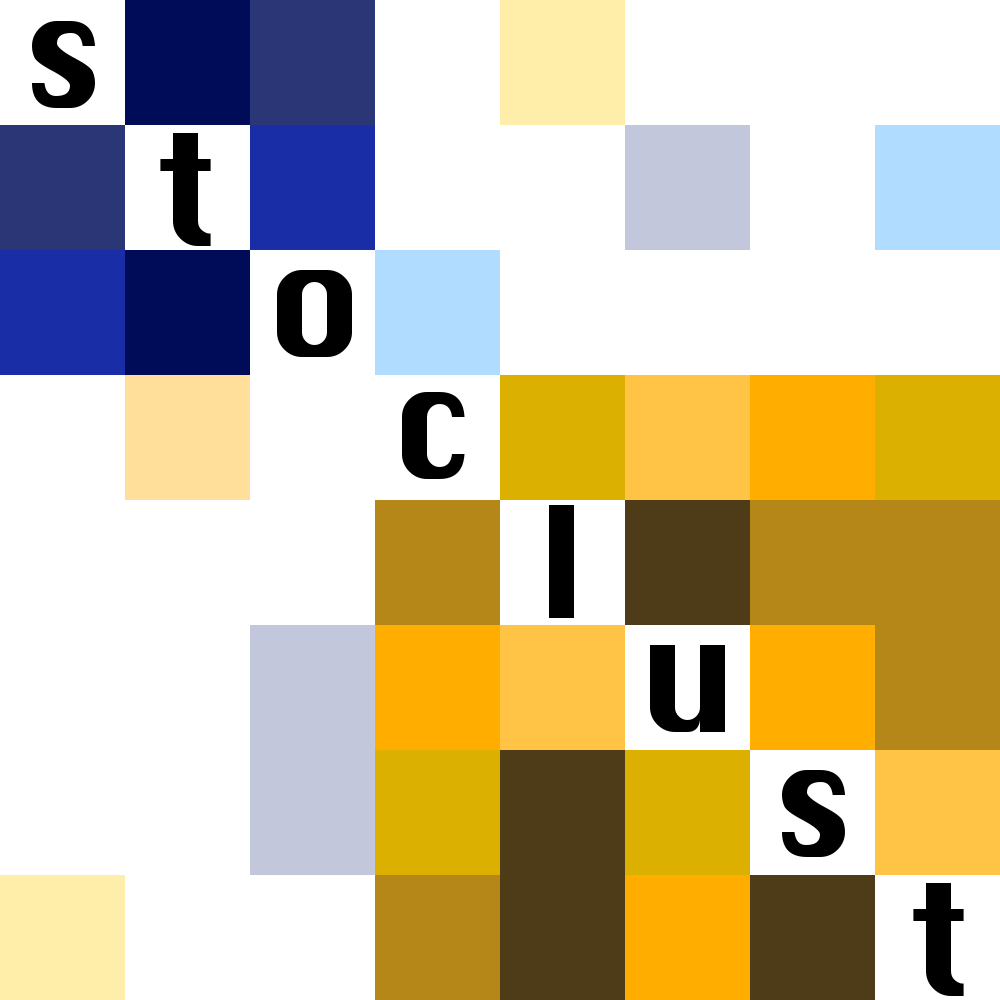stoclust

Clustering algorithms using stochastic analysis and ensemble techniques.
regulators
↳ stoclustContains some pre-defined regulators and halting
conditions for use in the markov_random_walk method.
A regulator is any function which receives the following arguments…
| Arguments | Type | Description |
|---|---|---|
time |
int |
The timestep of the random walk. |
probs |
np.ndarray |
The original transition probabilities of the walk. |
at_node |
int |
The index of the current node. |
node_data |
np.ndarray |
An array in which “node data” may be stored, to make the random walk memoryful. |
…and returns the following outputs…
| Returns | Type | Description |
|---|---|---|
is_report |
bool |
Whether a report is to be logged. |
report |
object |
The report, if is_report == True, or NoneType if is_report == False. |
new_probs |
np.ndarray |
The modified transition probabilities. |
…and, optionally, which modifies the node_data array in-place in order to update the memory of the walk.
A halting condition is similar but also simpler. It is any function which receives the following arguments…
| Arguments | Type | Description |
|---|---|---|
time |
int |
The timestep of the random walk. |
at_node |
int |
The index of the current node. |
node_data |
np.ndarray |
An array in which “node data” may be stored, to make the random walk memoryful. |
…and returns a single boolean output, which if True will result
in the halting of the random walk.
Functions
-
halt_after_time
halt_after_time(time,at_node,node_data,max_time=100)
Halts after a fixed duration of time. -
halt_when_explored
halt_when_explored(time,at_node,node_data)
Modifies transition probabilities by making it impossible to transition to any node which has been visited already at least max_visits times; when a node is removed in this way, reports the ID of the removed node. -
node_removal_regulator
node_removal_regulator(time, probs, at_node, node_data, max_visits=5)
Modifies transition probabilities by making it impossible to transition to any node which has been visited already at least max_visits times; when a node is removed in this way, reports the ID of the removed node.